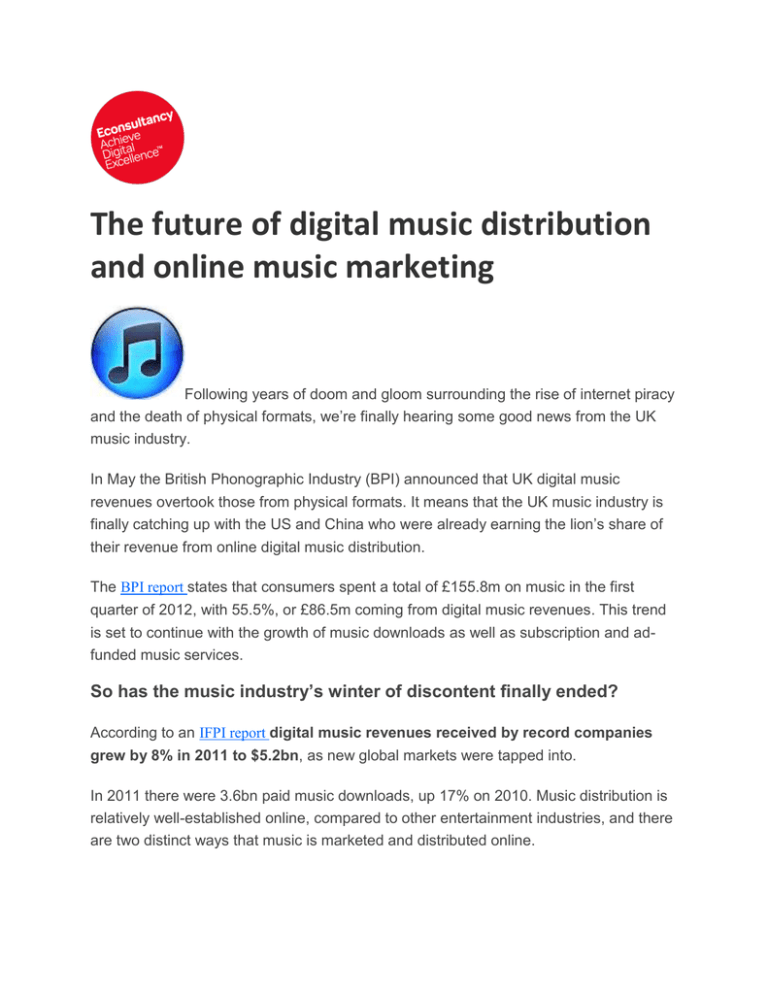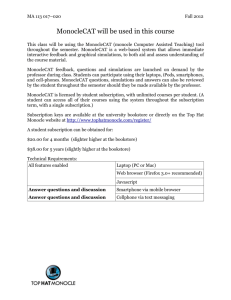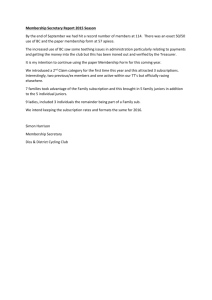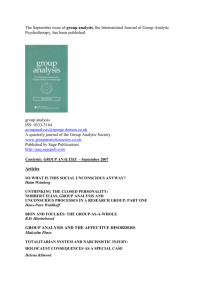Music access and marketing
advertisement

The future of digital music distribution and online music marketing Following years of doom and gloom surrounding the rise of internet piracy and the death of physical formats, we’re finally hearing some good news from the UK music industry. In May the British Phonographic Industry (BPI) announced that UK digital music revenues overtook those from physical formats. It means that the UK music industry is finally catching up with the US and China who were already earning the lion’s share of their revenue from online digital music distribution. The BPI report states that consumers spent a total of £155.8m on music in the first quarter of 2012, with 55.5%, or £86.5m coming from digital music revenues. This trend is set to continue with the growth of music downloads as well as subscription and adfunded music services. So has the music industry’s winter of discontent finally ended? According to an IFPI report digital music revenues received by record companies grew by 8% in 2011 to $5.2bn, as new global markets were tapped into. In 2011 there were 3.6bn paid music downloads, up 17% on 2010. Music distribution is relatively well-established online, compared to other entertainment industries, and there are two distinct ways that music is marketed and distributed online. The main divide in online music distribution is between access and ownership, and there are important developments on both sides. Music access Access refers to services which offer consumers the ability to listen to music without owning it. This includes streaming services, which are either treated as promotional content or paid for through advertising revenues, and subscription services such as Spotify. Spotify is the biggest player in the music subscription market. Since its launch in 2008 it has gone from strength-to-strength, and last year moved into the USA, the biggest music market of all. It is paid for through paid subscriptions and advertising which is played between tracks. Music Ownership Ownership is the old model of music consumption, pay once and listen forever. Mp3 downloads are growing in popularity, whether it’s mainstream music downloaded on iTunes or independent artists’ music on sites like Band Camp. Many consumers still live in the ownership age, and don’t see the value of music access; they want to own the music. Consumer demand for music is being driven by the growth in popularity of smartphones and tablet devices, as well as growing broadband penetration. Increasingly users are looking to replicate their record collection on iTunes or a mobile device. Technological developments are changing the way that we manage and store music. iTunes launched Match in November 2011, a service which allows users to access their iTunes library across a range of devices without having to manually transfer files. The service costs $25 per year and is licensed by record labels. Google Music was also launched in November for the Android platform, which also helps users to access purchased materials from a cloud to multiple devices. Ownership vs. access Access might be the future of online music distribution, but for now ownership is here to stay. Only a small percentage of the customer base is active in digital music currently, and many of these are the people who still value the ownership of music as a physical product. As the younger generations (who currently use free music access services such as Spotify, YouTube and Pandora) begin to acquire spending power, they are likely to heavily influence the development of paid access-based and subscription services. Until then, the older generations will continue to value ownership of music despite advancements in music access. With subscription services and music access, users understand that the content cannot be accessed when the subscription has ended. They also understand that when they buy and own music, it is theirs for a lifetime, just like a CD, cassette or LP. Today the average consumer has numerous devices which they might wish to play music on, some connected and some not: car stereo, Walkman or mp3 player, phone, computer. Music subscription services have made progress in recent years, especially with the arrival of mobile sites and smartphone apps, but they still don’t offer the same degree of device ubiquity as an owned Mp3 which can be copied and transferred between devices whether they are internet-connected or not. The downside of ownership of music is that size restraints can mean that a whole music collection can’t be mobile. Music subscription could be seen as the answer, since all that is needed is network connectivity, but ubiquitous connectivity still hasn’t been reached. It’s only when you compare the prices of owned vs. accessed music that you begin to see why subscription and access services are so appealing. It could cost thousands to build a significant collection of mp3s going the ownership route, while $10 per month will buy you “all you can eat” on many subscription services. Music access and marketing Allowing access to music online can be a great way of promoting releases, events and other related products. Not only could users who access the music end up purchasing it at a later date, they could share it on their social media profile and promote it to their followers and contacts. There are several embeddable music players which can help distribute music to different social networks. Zimbalam, SoundCloud or Bandcamp apps all allow tracks to be streamed from other sites. Artists also now have a specific ‘listen’ function built into their Facebook pages, further evidence of the tight integration of music with social media. Many music access sites not require users to login via Facebook, with SoundCloud, Mixcloud and Spotify being built around that platform. It means that activities on these music sites can translate into visible activities on Facebook which promote the artist, music, event or product. Music is an inherently social experience, even more so than any other form of art or expression, and digital music is no exception. While sharing owned music is technically illegal, and can involve creating additional physical copies, streaming services are designed with sharing in mind. Music ownership and marketing Giving away free downloads might seem like the wrong way to promote music, but streaming doesn’t work for some audiences – they are only interested in owning music. These users are far more likely to buy music and related products if they are given a free download. Some marketers giveaway low bitrate mp3s for free in the hope that listeners will end up paying for a high quality mp3, wav or flac file. This works particularly well for DJs who need high quality audio to play at high volumes on large sound systems. When giving away music, it’s advisable to ‘gate’ the content in order to get something from the downloader, and this could include social actions such as: • Shares. • Likes. • Re-tweets. • +1s. A ‘share2download’ Facebook app can gate content and ensure that various social actions are made before a user can download a track for free. Meanwhile, unsigned and indie artists use Bandcamp to capture the email address of anyone who wants to download free music. These email addresses can come in handy at a later date to promote releases, events and merchandise. Music isn’t doomed, it’s just that the way it is being consumed is changing. As the industry begins to get to grips with new technology we can expect to see musicians and record labels do a better job of marketing, distributing and monetising digital music online. http://econsultancy.com/us/blog/10275-the-future-of-digital-music-distribution-and-online-musicmarketing Questions: 1. According to the article “How Music Distributors Work”, how many distributors typically stand between the artist/producer and the retail seller? a. 1 b. 2 c. 3 d. 1 or 2 2. Which of the following are responsible for marketing to the consumer – the producer, the distributor, or the retailer?________________________________ 3. The distributor can be thought of as a ________________________. 4. Describe at least two of the multiples distribution paths an artist/producer can choose to teach the eventual consumer. 5. The two primary methods of distributing music today are __________________ and ______________. 6. Can a distributor be successful at both methods? 7. Why would a musical access retailer choose to offer its product only through a social media site such as Facebook? 8. What did the author mean with the saying “Winter of Discontent”?




